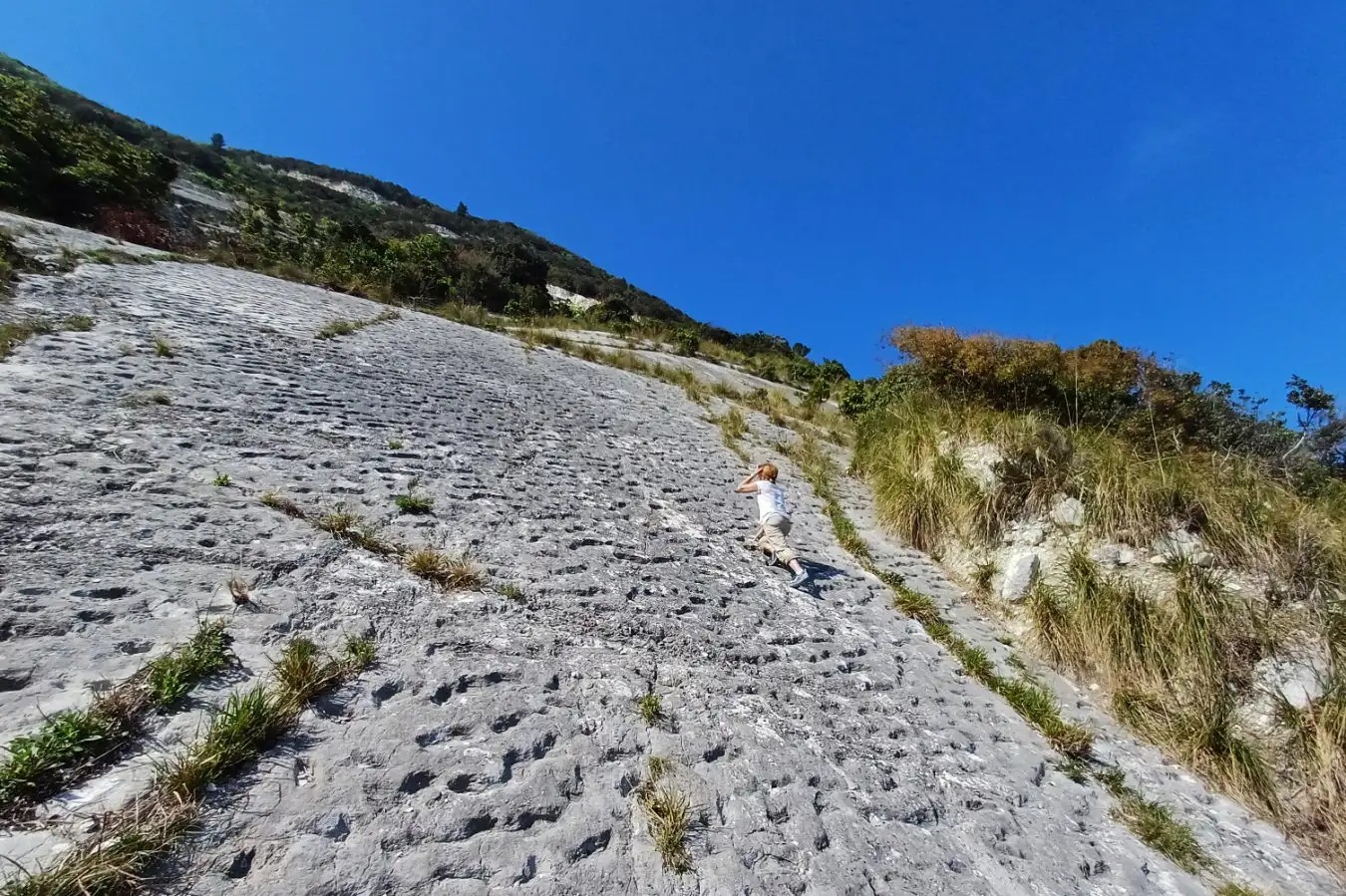Strange, well-preserved tracks discovered on the slopes of Monte Cònero in Italy suggest a panicked stampede of sea turtles fleeing an earthquake roughly 83 million years ago. The discovery, made by free climbers in a restricted area, has sparked debate among paleontologists about the nature and cause of these unusual markings.
The Discovery: Thousands of Prints in Ancient Limestone
Over 1,000 prints were found in two distinct locations: one high above the present-day shoreline (over 100 meters up the slope) and another now at sea level on La Vela beach. The rock formations consist of Cretaceous-period limestone, formed from fine sediment in a shallow seabed. The sheer number and arrangement of the tracks are what make this find so compelling.
What Caused the Panic?
Scientists, led by Alessandro Montanari of the Geological Observatory of Coldigioco, believe a strong earthquake likely triggered the event.
“It may have been a strong earthquake, which scared the bejesus out of these poor animals who were peacefully hanging around the nutrient-rich shallow water environment,” Montanari says.
The animals—likely sea turtles—would have fled in terror toward the open sea, leaving behind their paddle prints in the soft, muddy seafloor.
For such tracks to be preserved, they would have needed to be rapidly buried by sediment, a process that an earthquake-triggered landslide could explain.
Debate Among Experts: Biological or Geological?
Not all paleontologists are convinced. Anthony Romilio of the University of Queensland argues that the markings do not match the anatomy or rhythm of sea turtle flipper strokes. He suggests the prints may be abiotic – meaning they were created by geological processes rather than living creatures.
This highlights the difficulty of interpreting ancient traces without direct evidence.
Why This Matters: Rare Preservation and Paleontological Mystery
The preservation of such a large-scale event is exceptionally rare. If confirmed as turtle tracks, this would be the most extensive fossilized stampede ever discovered. The finding underscores how sudden catastrophic events can create unique windows into the past, though interpreting these events often requires careful analysis and debate.
Further research, including expert ichnological analysis (the study of trace fossils), is needed to definitively determine the origin of these mysterious tracks. The mystery remains whether this is a snapshot of ancient panic or a trick of geology.
